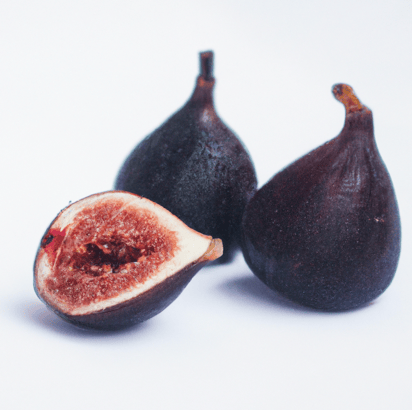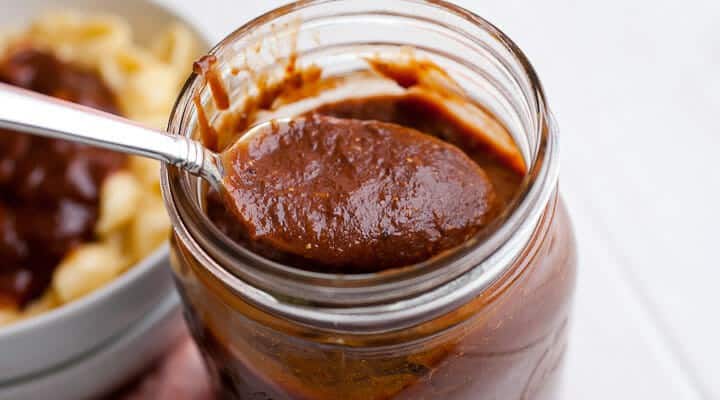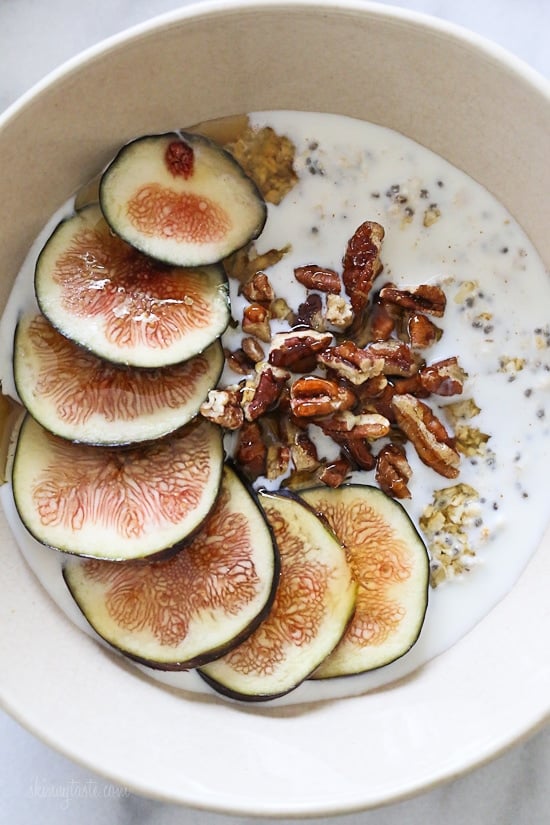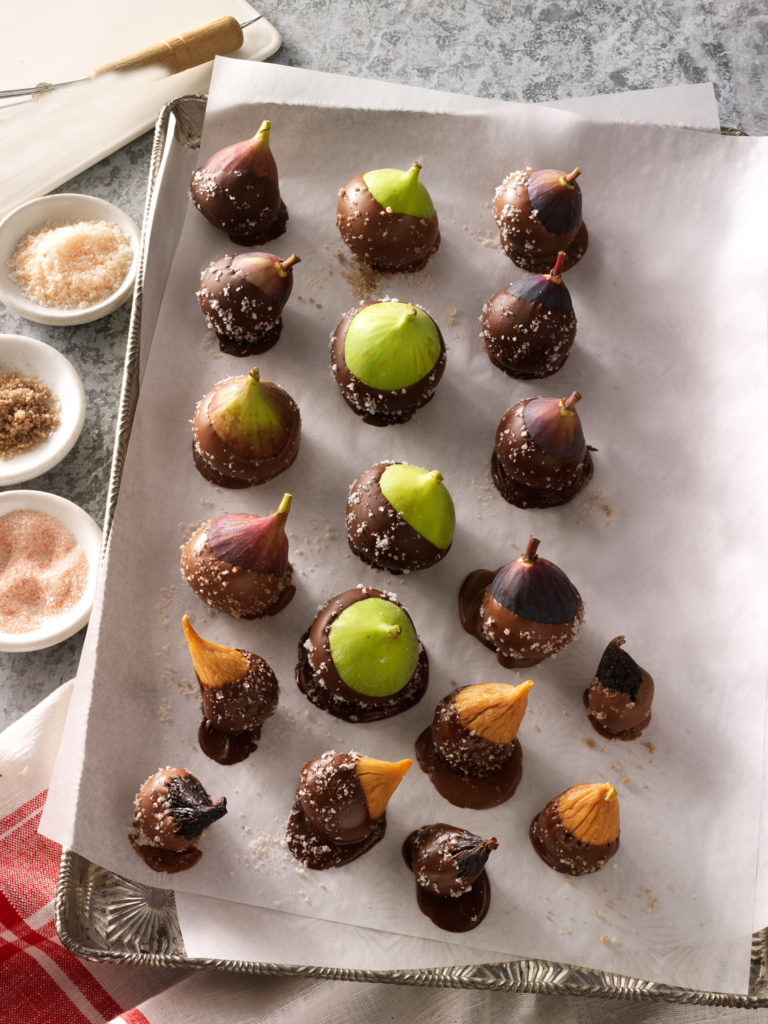Figs: Important Facts, Health Benefits, and Recipes
Explore the world of figs with our ultimate guide, covering their origins, health benefits, culinary uses, and creative recipe ideas for this nutritious and versatile fruit.

Best Figs Recipes
-

-

-

-

-

-

-

-

-
![Honey Roasted Figs and Chicken Image]()
-
![Fresh Fig Tart Image]()
-
![Figgy Streusel Scones Image]()
-
![Prosciutto Wrapped Figs with Blue Cheese Image]()
-
![Fall French Toast Breakfast Board Image]()
-
![Coconut Almond Butter Mousse Smoothie Image]()
-
![Blueberry Cardamom Vanilla Smoothie Image]()
-
![Pumpkin Waffle Board Dinner Image]()
-
![Roasted Goat Cheese Figs Image]()
-
![Cinnamon Fig Yogurt Cake Image]()
-
![Mini Christmas Cake Cheese Board Image]()
-
![Fig and Grape Crostini Image]()
-
![Chocolate-Covered Figs Image]()
-
![Gorgonzola Fig and Spinach Pizza Image]()
-
![Best Brunch Board Image]()
-
![Trader Joe’s EPIC Pumpkin Pancakes Board Image]()
-
![Grilled Fruit Vegetable Charcuterie Board Image]()
-
![Figgy Sparkler Cocktail Recipe With Fig-Infused Vodka Image]()
-
![Raw Vegan Oatmeal Breakfast Recipe With Cinnamon and Apples Image]()
-
![Easy Fig Crostini Appetizer Recipe Image]()
-
![Andrew Carmellini's Whipped Sheep's Milk Ricotta Recipe Image]()
-
![Bacon-Wrapped Figs With Blue Cheese and Bourbon Recipe Image]()
-
![Dinner Tonight: Warm Prosciutto, Fig, and Blue Cheese Salad Recipe Image]()
-
![Roasted Fig Cocktail Recipe Image]()
-
-
![Grilled Figs Stuffed With Goat Cheese Recipe Image]()
-
![Fig and Balsamic Soda Recipe Image]()
-
![Pasta With Figs and Prosciutto Recipe Image]()
-
![Nigel Slater's Duck with Figs and Barolo Image]()
-
![Planked Figs With Pancetta and Goat Cheese Recipe Image]()
-
![Pan-Seared Foie Gras With Fig Mostarda and Fresh Figs Recipe Image]()
-
![Rosemary, Honey, and Fig Cake Recipe Image]()
-
![Fig Tart Image]()
-
![Fresh Fig Coulis Recipe Image]()
-
![Fig and Honey Smoothie Image]()
-
![Fresh Figs in Sweet Spiced Syrup (Recipe) Image]()
-
![Yogurt Panna Cotta With Figs and Honey Image]()
-
![Caramelised Red Onion Tart with Walnut Pastry Recipe Image]()
-
![Blue Cheese-Stuffed Figs Recipe Image]()
-
![Honey-Fried Figs Recipe Image]()



















:max_bytes(150000):strip_icc()/FiggySparkler-Cocktail-5a13493e0d327a0037e45ff8.jpg)
:max_bytes(150000):strip_icc()/breakfast-made-of-oatmeal-with-apples--honey-and-cinnamon--154953558-5ad3aa54312834003621ef3f.jpg)
:max_bytes(150000):strip_icc()/FigCrostini-5b3019ab1d64040037c12b36.jpg)
:max_bytes(150000):strip_icc()/__opt__aboutcom__coeus__resources__content_migration__serious_eats__seriouseats.com__recipes__images__20101004fig-ca3eb10b9b314ac588f00f13c3121f39.jpg)
:max_bytes(150000):strip_icc()/__opt__aboutcom__coeus__resources__content_migration__serious_eats__seriouseats.com__2018__03__20180307-bacon-wrapped-stuffed-bourbon-figs-overhead-morgan-eisenberg-5ab4d0f4cad247df9a3356c8693920a6.jpg)

:max_bytes(150000):strip_icc()/__opt__aboutcom__coeus__resources__content_migration__serious_eats__seriouseats.com__recipes__images__2011__09__20110914-170527-seasonalcocktails-roastedfig-e606749f8a2c4213b05d122c68b18c85.jpg)
:max_bytes(150000):strip_icc()/__opt__aboutcom__coeus__resources__content_migration__serious_eats__seriouseats.com__recipes__images__2011__11__20111101-177674-grilled-figs-with-goat-cheese-f7233be2048f47a896bbaddd121d29b5.jpg)
:max_bytes(150000):strip_icc()/__opt__aboutcom__coeus__resources__content_migration__serious_eats__seriouseats.com__recipes__images__2014__08__20170726-fig-balsamic-soda-autumn-giles-0256718c375846e9910c139ff2a6a4e4.jpg)
:max_bytes(150000):strip_icc()/__opt__aboutcom__coeus__resources__content_migration__serious_eats__seriouseats.com__recipes__images__2013__09__20130925-figpasta3-6af6c391fa6545aeb6d2212aff21926f.jpg)
:max_bytes(150000):strip_icc()/__opt__aboutcom__coeus__resources__content_migration__serious_eats__seriouseats.com__recipes__images__2012__08__20120825-220091-cook-the-book-duck-with-figs-57bb4ba2eaa64ecea977f175b6928a21.jpg)
:max_bytes(150000):strip_icc()/__opt__aboutcom__coeus__resources__content_migration__serious_eats__seriouseats.com__recipes__images__2013__03__20130303-243011-planked-figs-2c2acbf6a4d045e7aab4540aaf445010.jpg)
:max_bytes(150000):strip_icc()/__opt__aboutcom__coeus__resources__content_migration__serious_eats__seriouseats.com__recipes__images__2012__12__20121213-seared-foie-food-lab-17-931788dc1f8a46baba28ba789e5dadab.jpg)
:max_bytes(150000):strip_icc()/__opt__aboutcom__coeus__resources__content_migration__serious_eats__seriouseats.com__recipes__images__2012__07__20120717-127677-LTE-Fig-Honey-Rosemary-Cake-PRIMARY-3262e247ff3d4d67aa3a0a7668bd2aa8.jpg)
:max_bytes(150000):strip_icc()/__opt__aboutcom__coeus__resources__content_migration__serious_eats__seriouseats.com__recipes__images__2012__08__20120822-the-seasonal-baker-fig-tart-41e8cc6871da43918e34dff366d3ab5a.jpg)
/fig-coulis-2216325-hero-01-e1cbd41f1b714fcf826044bbbc902fa6.jpg)
:max_bytes(150000):strip_icc()/IMG_4435fq-579d3acf5f9b589aa98bcea3.jpg)
:max_bytes(150000):strip_icc()/Spicefigs-GettyImages-746038815-59d3ad06845b3400114f83c2.jpg)
/aIMG_0774fsq-56a6180a5f9b58b7d0dfe0ab.jpg)
/GettyImages-145063283-2--58a715ec5f9b58a3c92ef2bd.jpg)
:max_bytes(150000):strip_icc()/blue-cheese-stuffed-figs-recipe-4126623-hero-01-2657924409ec4a74a443a47f857e17eb.jpg)
:max_bytes(150000):strip_icc()/SES-honey-fried-figs-2216328-hero-A-41be015e5c4a4d74af69187fceb1259a.jpg)